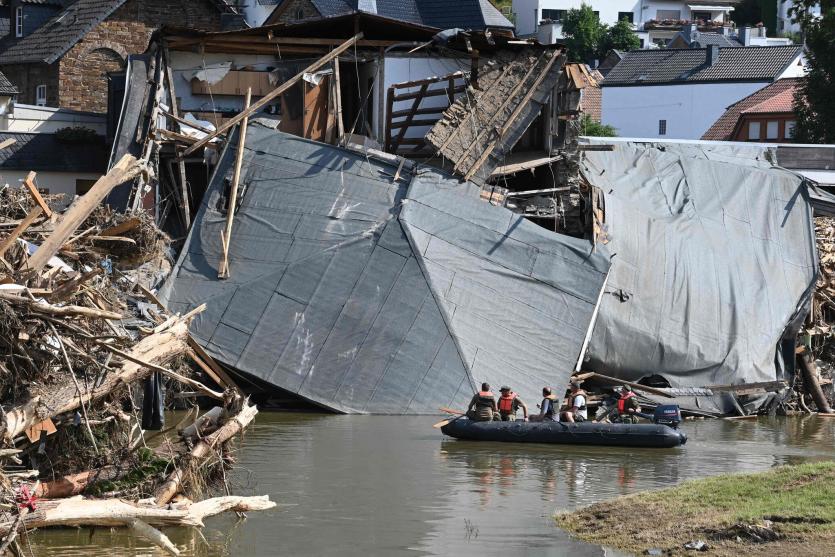The roof of a home destroyed by floods in July collapsed into the Ahr River in Rech, Germany. Photo: AFP/Getty Images
By Patryk Krych | The World Daily | AUGUST 24th 2021
According to recent research, the possibility of potentially deadly floods in Germany have become nine times as likely over the years with the development of the climate crisis, as seen with the recent and lethal deluge in Germany and Belgium in July.
A series of severe disaster patterns have been noted in the recent months of the Summer of 2021, with many regions in Western Europe and China experiencing disastrous floods amidst heavier rainfall. Other such disasters have been seen in Turkey, Greece and Russia with destructive wildfires breaking out, as well as the North-Western United States and Canada where record-shattering heatwaves were recorded.
The mid-July deluge in Western Germany was particularly deadly, having taken at least 190 lives. The one in Belgium took 38. Recently, a study was able to further make the connection between man-made emissions, the changing climate, and the increasing rate of disasters the world is suffering.
This was adding further evidence to the findings of the landmark report from the Intergovernmental Panel on Climate Change, published earlier this month, which states that human-made greenhouse emissions were the primary cause of increasing extreme weather conditions felt all around the world.
“The huge human and economic costs of these floods are a stark reminder that countries around the world need to prepare for more extreme weather events, and that we urgently need to reduce greenhouse gas emissions to avoid such risks from getting even further out of hand,” said director of the Red Cross Red Crescent Climate Centre, Prof Maarten van Aalst, at the University of Twente, in the Netherlands.
This most recent study, which was performed by Van Aalst and 38 other scientists, revealed that rainfall in the flooded regions of Germany had gotten at least 20% more severe due to man-made global warming.
To attain these findings, the study made use of peer-reviewed research methods alongside computer models. It made theoretical comparisons between a world where human-made climate change was non-existent, and the modern day rainfall that had been felt in Germany, Belgium and the Netherlands.
The results had found that extreme, flood-making rainfall was between 1.2 and nine times more likely to occur than normal. About 93 millimetres (3.6 inches) of rain had fallen in a single day during the crisis, in the Ahr and Erft regions of Germany.






